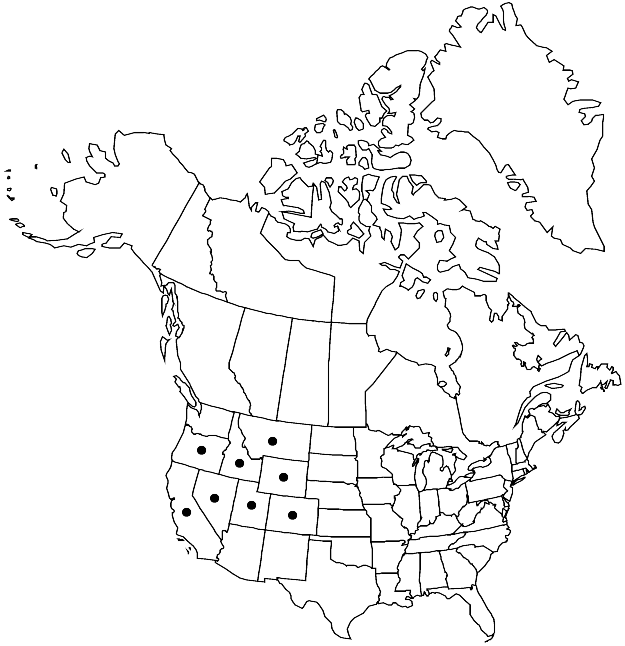Stanleya viridiflora
in J. Torrey and A. Gray, Fl. N. Amer. 1: 98. 1838.
Perennials; (caudex simple, covered with persistent petiolar remains); (glaucous), glabrous throughout. Stems erect, unbranched or branched distally, (2.5–) 4–12 (–14) dm. Basal leaves: petiole 2–10 (–16) cm; blade lanceolate to oblanceolate or ovate, (2.2–) 5–18 (–22) cm × 10–40 (–60) mm, margins often entire, sometimes dentate, rarely lyrate-pinnatifid. Cauline leaves sessile; blade lanceolate, (2–) 3.5–8.5 (–11) cm × (2–) 5–19 (–28) mm (smaller distally, base auriculate to sagittate), margins entire. Racemes loose. Fruiting pedicels horizontal to divaricate-ascending, 4–9 (–12) mm. Flowers: sepals oblong-linear, 12–18 mm; petals whitish to lemon yellow, narrowly oblanceolate, 13–20 × 1–3 mm, claw 7–11 mm, (nearly linear-lanceolate), slightly wider at base, (margins usually erose, rarely subentire and crisped); filaments 11–20 mm; anthers 3.5–6 mm; gynophore (6–) 11–22 (–25) mm. Fruits divaricate or descending, curved inward, (torulose), subterete, 3–6 (–7) cm × 1.2–2 mm; ovules 28–50 per ovary; style 0.04–0.3 mm. Seeds oblong, 2–3 × 1–1.2 mm. 2n = 28.
Phenology: Flowering May–Jul.
Habitat: Sagebrush and pinyon-juniper communities, limestone shale and rocks, red sandstone slopes, volcanic rocky slopes, clay knolls, steep bluffs
Elevation: 1300-2700 m
Distribution

Calif., Colo., Idaho, Mont., Nev., Oreg., Utah, Wyo.
Discussion
Stanleya collina M. E. Jones is an illegitimate name that pertains to S. viridiflora.
Selected References
None.
Lower Taxa
"elongated" is not a number."thick" is not a number."dm" is not declared as a valid unit of measurement for this property."dm" is not declared as a valid unit of measurement for this property.
